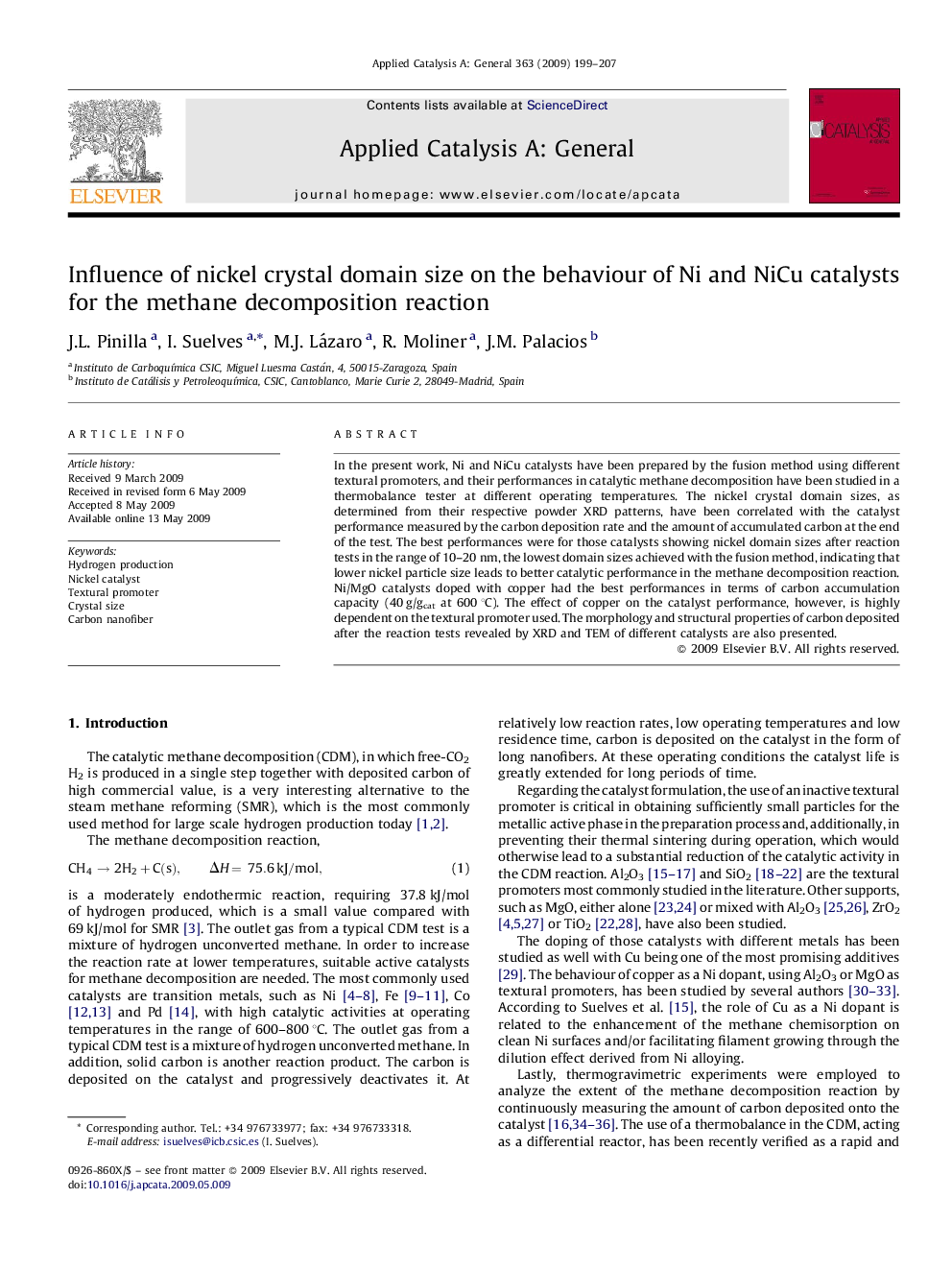| Article ID | Journal | Published Year | Pages | File Type |
|---|---|---|---|---|
| 42326 | Applied Catalysis A: General | 2009 | 9 Pages |
In the present work, Ni and NiCu catalysts have been prepared by the fusion method using different textural promoters, and their performances in catalytic methane decomposition have been studied in a thermobalance tester at different operating temperatures. The nickel crystal domain sizes, as determined from their respective powder XRD patterns, have been correlated with the catalyst performance measured by the carbon deposition rate and the amount of accumulated carbon at the end of the test. The best performances were for those catalysts showing nickel domain sizes after reaction tests in the range of 10–20 nm, the lowest domain sizes achieved with the fusion method, indicating that lower nickel particle size leads to better catalytic performance in the methane decomposition reaction. Ni/MgO catalysts doped with copper had the best performances in terms of carbon accumulation capacity (40 g/gcat at 600 °C). The effect of copper on the catalyst performance, however, is highly dependent on the textural promoter used. The morphology and structural properties of carbon deposited after the reaction tests revealed by XRD and TEM of different catalysts are also presented.
Graphical abstractNi and NiCu catalysts have been prepared by the fusion method using different textural promoters and their performance in methane decomposition have been studied in a thermobalance at different operating temperatures. Nickel crystal domain sizes measured after the reaction have been correlated with catalysts performance. The morphology and structural properties of carbon deposited after the reaction are also presented.Figure optionsDownload full-size imageDownload as PowerPoint slide
